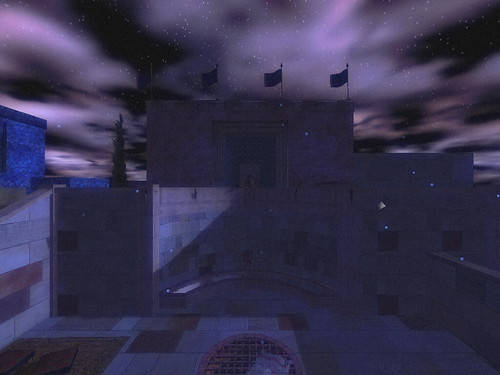Fatale
By: Derek Yu
On: October 23rd, 2009
Fatale is the latest mystical experiment from Tale of Tales. It’s inspired by Oscar Wilde’s interpretation of the biblical character Salome, although, in my opinion, knowledge of the story is not required to enjoy the game. I wasn’t familiar with it before I played.
I think the game captures the spirit of the story very well. I don’t think it’s meant to retell the story, per se, but to give it a certain added richness by letting you explore a few of the critical scenes in interesting ways. It’s worth mentioning that Takayoshi Sato (of Silent Hill fame) did the character design, which is perfect considering the sensual and macabre nature of Salome’s tale. Overall, the graphics and audio are quite good.
I enjoyed Fatale and came out of it thinking about its implications and intrigued by its source material. However, I still feel that it’s a good game that’s shy of great. For it to be great would require more detail in the simulation, which sometimes feels clunky and uninspired. Whereas these flaws might go unnoticed in the games of “seasoned gamers” (a phrase playfully cribbed from the website), in Fatale they really stand out for the simple fact that looking around and taking in the environment is the game’s primary focus.
TIGdb: Entry for Fatale
-
Anarkex
-
Michaël Samyn
-
Paul Eres
-
ctankep
-
Paul Eres


